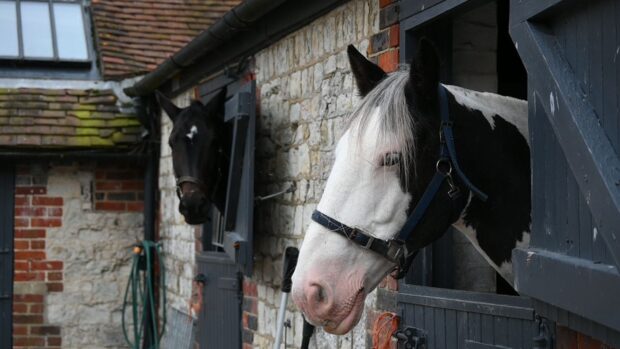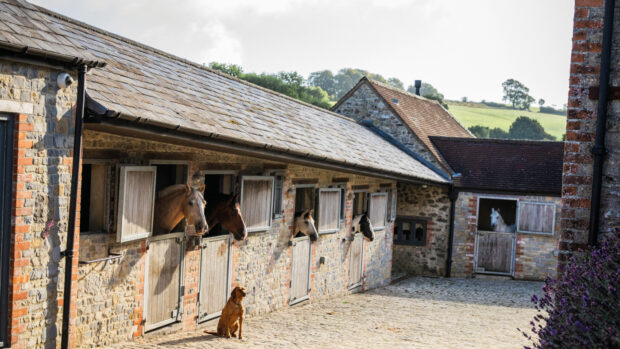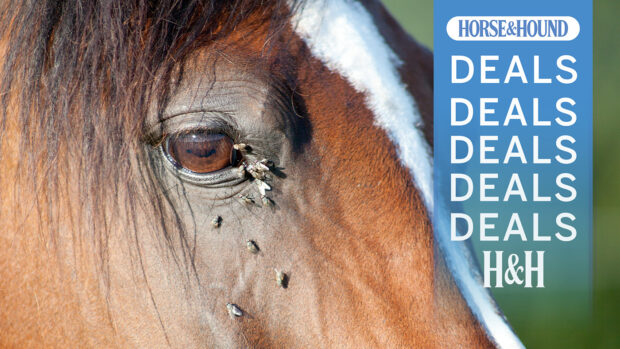Flies are a summer challenge to horses – and their owners – all around the world, but knowing what type of fly is the cause of your horse’s distress will help you in the battle against them.
The midge (Culicoide)
Characteristics
Midges can cause the irritating and unsightly skin condition sweet itch, which can be difficult to prevent or keep under control.
Midges are tiny little creatures which are feeble fliers and, in fact, according to vet Karen Coumbe, won’t attempt to fly any further than a mile to find a source of food.
They tend to lay their eggs on ponds, standing water, and damp vegetation. Once midges develop into adults they feed in swarms at dawn and dusk on calm days.
Managing the problem
You’llneed to remove their breeding source. Get rid of any standing water and don’t graze your horse next to a pond if possible.
Since the midge is a weak flier, install fans in your stable – you don’t see many midges on windy days.
Also, stable your horse at prime midge-feeding times – dawn and dusk – and spray him thoroughly with a good fly spray
Choose one with an oil base, as the oil acts as a protective barrier. Some oils used on their own or Benzyl benzoate also have the same effect. Seek advice from your vet.
The horse fly (Tabanus)
Characteristics
Identified by his brown/black body and size (0.5cm to 2.5cm).
Horse flies normally feed alone and near wooded areas.
Managing the problem
If possible, don’t graze your horse near this fly’s favourite breeding ground – the woods. Also, apply an effective, long-lasting insect repellent.
Vet Karen Coumbs recommends one which contains syntheticpyrethroids, especially permethrin or cypermethrin.
She also recommends turning horse “friends” out together where possible, as they can flick flies away from one another with their tails.
Horse flies are afraid of the dark. They like the sun and will rarely go inside darkened stables. So, if your horse suffers badly from their bites, keep him indoors during the day for the worst of the horse fly season (June and July).
Physical barriers, such as fly masks and rugs, can help, although horse flies are so big you might find they will eat their way through anything too thin.
You’ll know if your horse has become a victim of the horse fly as the evidence is a large bump with a central ulcer on the top of it.
Karen suggests treating these bites by bathing the affected area then applying a mild antiseptic cream or wash.
The deer fly (Chrysops)
Characteristics
The deer fly is the cousin of the horse fly, and although smaller, it is just as vicious and in fact more tenacious, as it tends to feed in groups and will even give chase.
You will most likely have seen this insect on a hack through the woods when your peaceful ride is suddenly interrupted by brown lacey-winged flies.
Managing the problem
An effective fly spray is usually the best advice. Give your horse a good covering before hacking out.
The stable fly (Stomoxys calcitrans)
Characteristics
As the name suggests, these flies are found in stables. The simple reason being that their favourite breeding ground – wet, soiled bedding – is close at hand.
Bites from these characters hurt a lot and this fly will continue to have a go again and again until his appetite is fully satisfied.
Managing the problem
Poor stable hygiene is the main culprit here, so manage this fly population by moving the manure pile well away from your horse’s stable.
The house fly (Musca domestica)
Characteristics:
These iridescent blue/black buzzy flies are commonly seen everywhere.
This is also the only nuisance fly in our group (meaning it laps instead of bites).
You’ll find this fly congregating mainly around your horse’s eyes and nose. They breed in fresh horse manure, so make sure you pick up the droppings from your paddocks on a regular basis, preferably daily.
Managing the problem
Fly fringes and masks can help to keep the flies away from your horse’s face. Also, making sure your horse is turned out with a field companion means they can keep the flies off each other.
The bot fly (Gastrophilus intestinalis)
Characteristics
The bot fly is less harmful than it’s perceived. Bot larvae can cause ulcers in the stomach and mouth, but this is rare.
If every horse in the UK were properly wormed against bots with Ivermectin in the winter time, the problem would be eliminated.
Managing the problem
Adult bots can be identified by their yellow and dark striped bodies.
The female has a stinger-like object on her stomach which she uses for attaching her yellow eggs to the horse, usually on the forelegs, shoulders, neck and mane. The eggs hatch when the horse licks or bites them.
The larvae then leave the egg and burrow into the horse’s tongue and gums. They stay there for at least a month until making their way into the stomach. They attach with hooks into the stomach lining until spring, when they are passed out through the faeces and onto the soil to develop into adults.
The entire cycle takes nine months in total.
Since cold and frost will kill a bot fly, the whole bot population spends winter inside horses.
Therefore, worm your horse with Iver- mectin (which kills the bot larvae inside the horse’s mouth and stomach) in early winter after the first frost, and remove eggs from your horse’s coat.
The eggs remain viable for many months and the frost won’t harm them. In summer, comb the eggs off every few days and use fly spray to discourage the female from laying more eggs.
Managing your fly problem
- Consider using fly barriers such as anti-midge/fly turn-out rugs and neck covers, fringes, veils and nose nets.
- Apply a long-lasting fly repellent or try using fly collars or leg bands.
- Spray your horse’s stable walls thoroughly with an insecticide. This will help to discourage stable flies from lingering there.
- Put up fly papers in your horse’s stable.
- Worm your horse against bots after the first frost.
- Remove droppings from your paddock regularly and keep the muck heap a good distance away from your horse’s stable.
- Discourage midges by removing any standing waterif possible.
- Practice good stable management. Remove wet bedding from your horse’s stable on a daily basis.
Flies can make summer a nightmare for horses and riders, but that needn’t be a reality.



